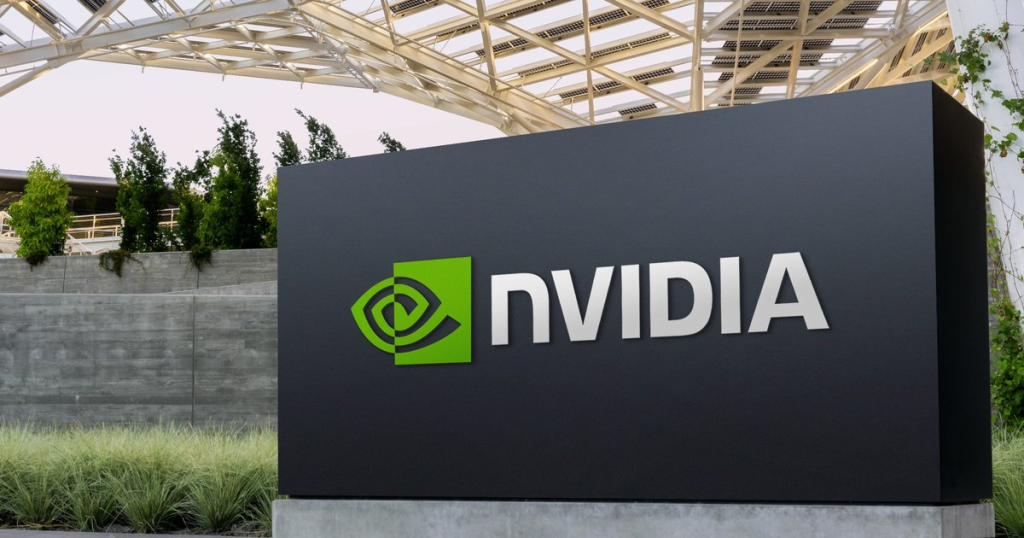Nvidia (NVDA) fell on Tuesday as an artificial intelligence summit got underway. Now, Nvidia stock is hitting a key resistance ahead of fourth-quarter results on Feb. 26.
The earnings report brings some risks with it. Add that to the fact that this is the first earnings season since 2022 that the Magnificent Seven companies have not reported a sales surprise. As Nvidia’s own report looms, is the stock a buy or sell now?
At the Paris AI summit, French President Emmanuel Macron announced a $113 billion investment plan that included nuclear power projects for artificial intelligence computing using 120,000 Nvidia chips in the first phase and 500,000 in 2018.
Meanwhile, OpenAI was reported to have turned down a $100 billion offer by a group led by Tesla’s (TSLA) Elon Musk. OpenAI is part of President Donald Trump’s Stargate AI project—a joint venture also involving Oracle (ORCL) and Japan-based SoftBank (SFTBY)
Nvidia will be a technology partner for the new venture.
On Monday, Taiwan Semiconductor reported January sales of $8.93 billion, a 36% increase from the year-ago period.
But for the full quarter, revenue is seen coming at the lower end of its guidance of $25 billion-$25.8 billion after an earthquake in January affected some of its facilities. Taiwan Semi reported no change to its full-year outlook. and stated it was “making every effort to recover the lost production.”
In January, TSMC beat estimates for its fourth quarter and gave a strong outlook for AI-chip demand. The chip foundry plans to double its chip on wafer on substrate packaging product, required by Nvidia’s most advanced chips, by the end of 2025. Analysts noted the Nvidia supplier had guided AI revenue to double this year, as demand continued to exceed supply.
Meanwhile, Nvidia got much-needed support after a trio of Big Tech leaders showed they were unfazed by DeepSeek and disclosed plans to increase their spending on artificial intelligence technologies. Combined, their spending plans stand at $245 billion.
Big Techs Confirm Huge Spending Plans
On Thursday last week, Amazon (AMZN) indicated it planned to increase its spending by 27% or $105 billion — mostly on AI data centers. But that was topped by Alphabet (GOOGL) which plans to increase its spending by 57% for a total of $75 billion. Earlier, Meta Platforms (META) Chief Executive Mark Zuckerberg indicated data-center spending plans of $60 billion to $65 billion in 2025 — a 59% increase at the midpoint.
Amazon’s CEO Andy Jassy noted that “most AI compute has been driven by Nvidia chips, and we obviously have a deep partnership with Nvidia and will for as long as we can see into the future.”
However, Microsoft’s (MSFT) spending on AI data centers is set to slow next year. Microsoft announced in December that the company was not “chip-supply constrained.” In a Securities and Exchange Commission filing last year, Nvidia disclosed that one customer accounted for 13% of its fiscal first-quarter revenue. UBS analyst Timothy Arcuri believed that the customer was Microsoft.
Nvidia’s price performance is beginning to improve. The relative strength line, which compares the stock with the S&P 500 index, is rising after it sank on Jan. 27, when Nvidia suffered the biggest one-day market cap loss for any public company on record.
In terms of 12-month price performance, Nvidia has beaten 89% of other stocks in Investor’s Business Daily’s database.
China Trade War
On Feb. 4, China retaliated against U.S. tariffs. China’s tariffs went into effect Monday. China accounted for 12% of total Nvidia sales for the four quarters ended in October, according to The Wall Street Journal.
However, when President Donald Trump’s tariff plans for China, Canada and Mexico were first revealed in November, Bernstein Research analyst Stacy Rasgon noted that “raw semiconductor” imports by these countries were tiny and would not hurt Nvidia. The analyst did say the tariffs raise some concerns that there may be more broad-based action that could hurt the semiconductor industry and even leaders like Nvidia.
Mizuho analyst Jordan Klein noted that the “restrictions seem in line or less severe than anticipated.” Piper Sandler analysts also stated there were fewer entities on the restriction list than expected.
For now, China’s tariffs target oil, coal, liquefied natural gas and agricultural machinery and will go into effect on Feb. 10. Notably, semiconductors and Nvidia chips were not on the list although export controls on some scarce minerals used in making chips came into effect.
DeepSeek Hits Nvidia
Nvidia stock sank on Jan. 27 amid reports that the latest large-language model from Chinese AI lab DeepSeek came close to the performance of its American rivals at a fraction of the cost. DeepSeek said its AI models cost $5.6 million to train compared with $100 million-$1 billion that Dario Amodei, CEO of privately held Anthropic, noted as the cost for U.S. companies last year.
Nvidia shares then fell below the 50-day moving average in heavy volume — a sell signal. Nvidia is a top AI stock to watch despite the plunge.
A company spokesperson noted that DeepSeek’s AI model uses a Test Time Scaling method that relies on other widely available AI models and takes longer to come up with better answers. This method allowed the system to be in compliance with export restrictions, the Nvidia spokesperson said.
Citi analyst Christopher Danely said that the model depends on cloud service providers and is evidence of “continued strong growth in spending in AI.” Meta’s chief Zuckerberg noted it was too early to assess the impact of DeepSeek on AI spending.
Meanwhile, according to The Wall Street Journal, DeepSeek’s chatbot may be banned on government devices.
Nvidia Stock Fund Ownership
Funds own 39% of Nvidia’s shares outstanding, according to IBD MarketSurge. But going by its Accumulation/Distribution Rating of E, funds aren’t necessarily buying shares. The rating measures price and volume action over the last 13 weeks.
On Jan. 15, KeyBanc analyst John Vinh raised concerns over manufacturing yields, which are limiting shipments of Nvidia’s liquid-cooled rack systems containing Blackwell chips. The analyst cut the 2026 revenue target from Nvidia’s data center business to $185 billion from $200 billion while maintaining an overweight rating and price target of 180.
But HSBC analyst Lee Frank noted concerns over a “supply chain overhang” for Blackwell chips that could hurt Nvidia’s ability to deliver another beat-and-raise quarter.



